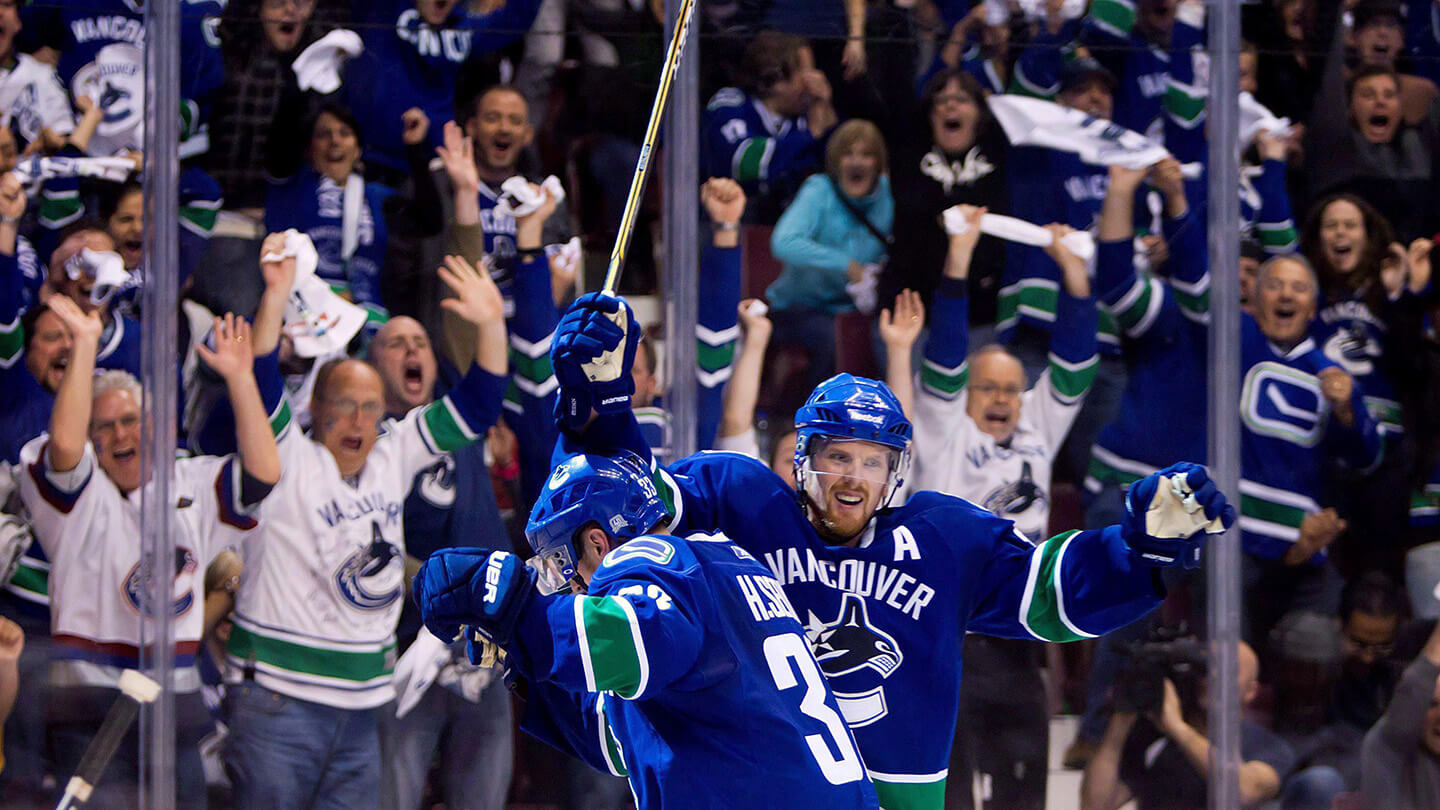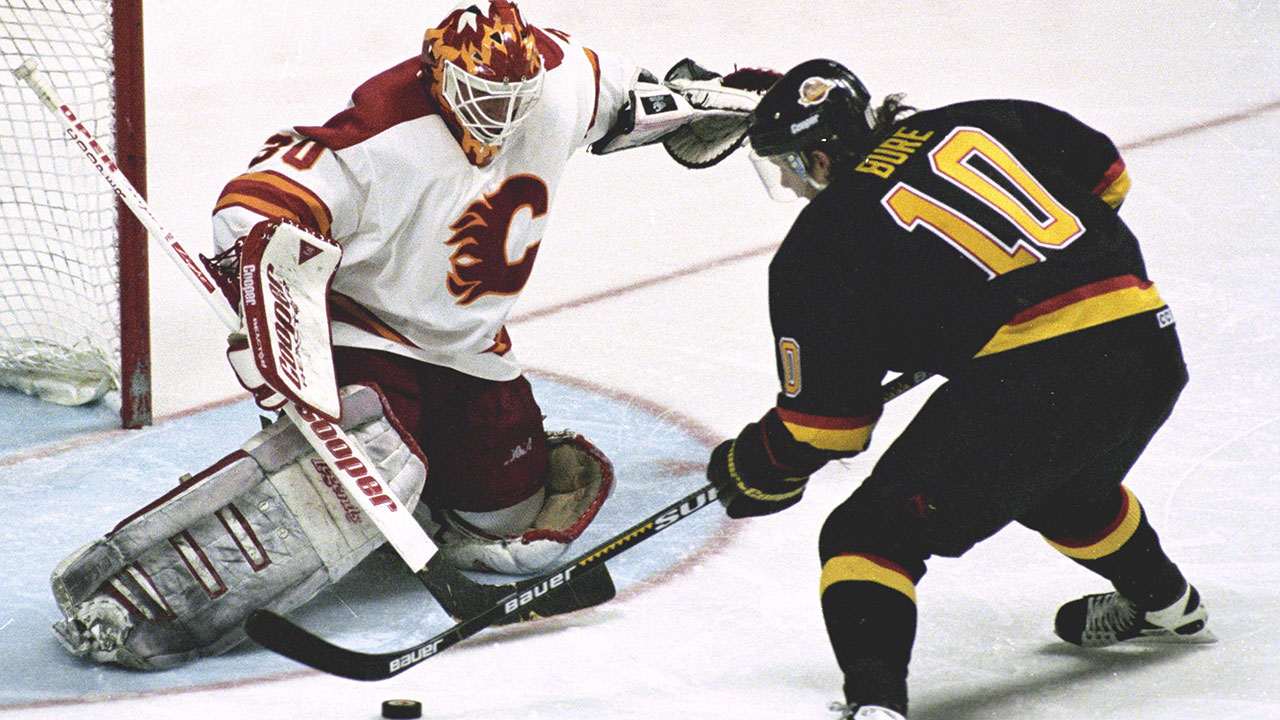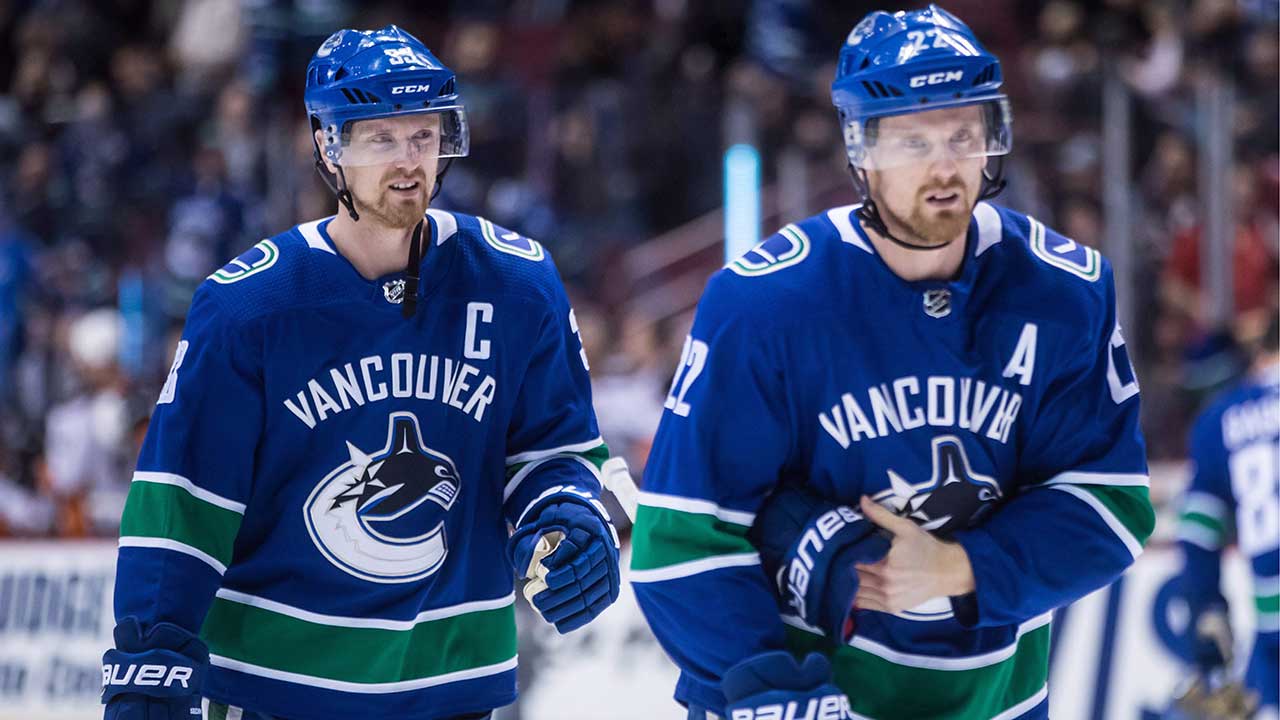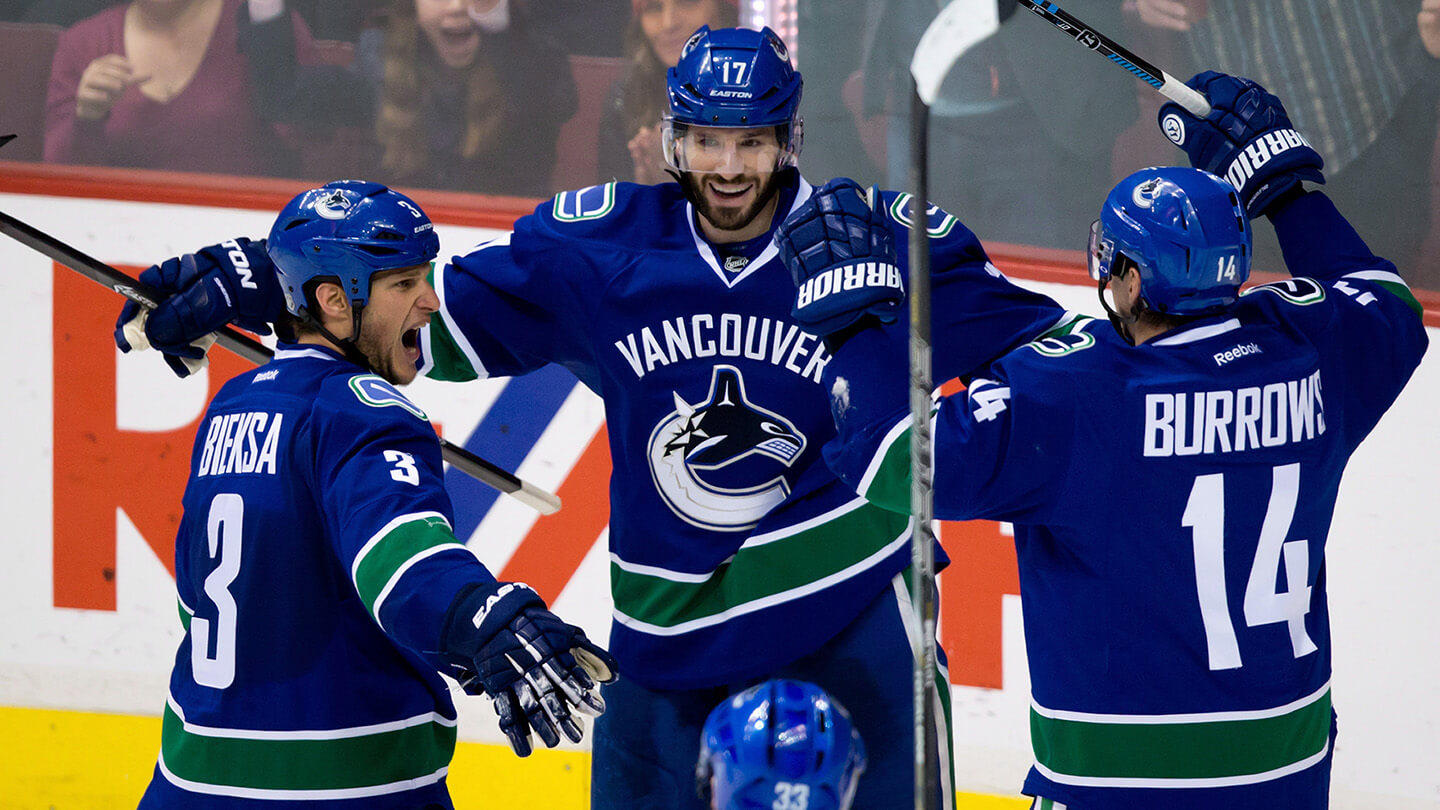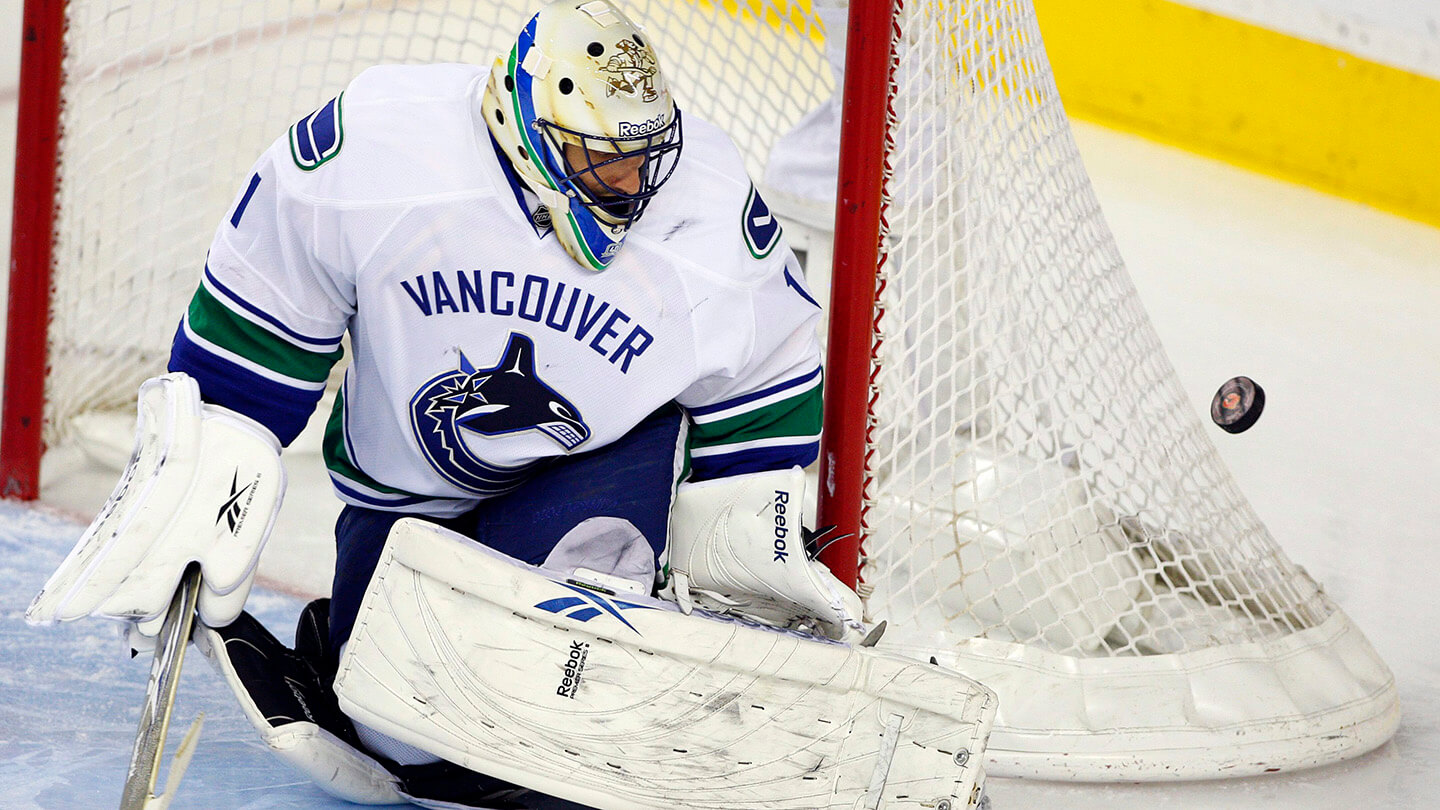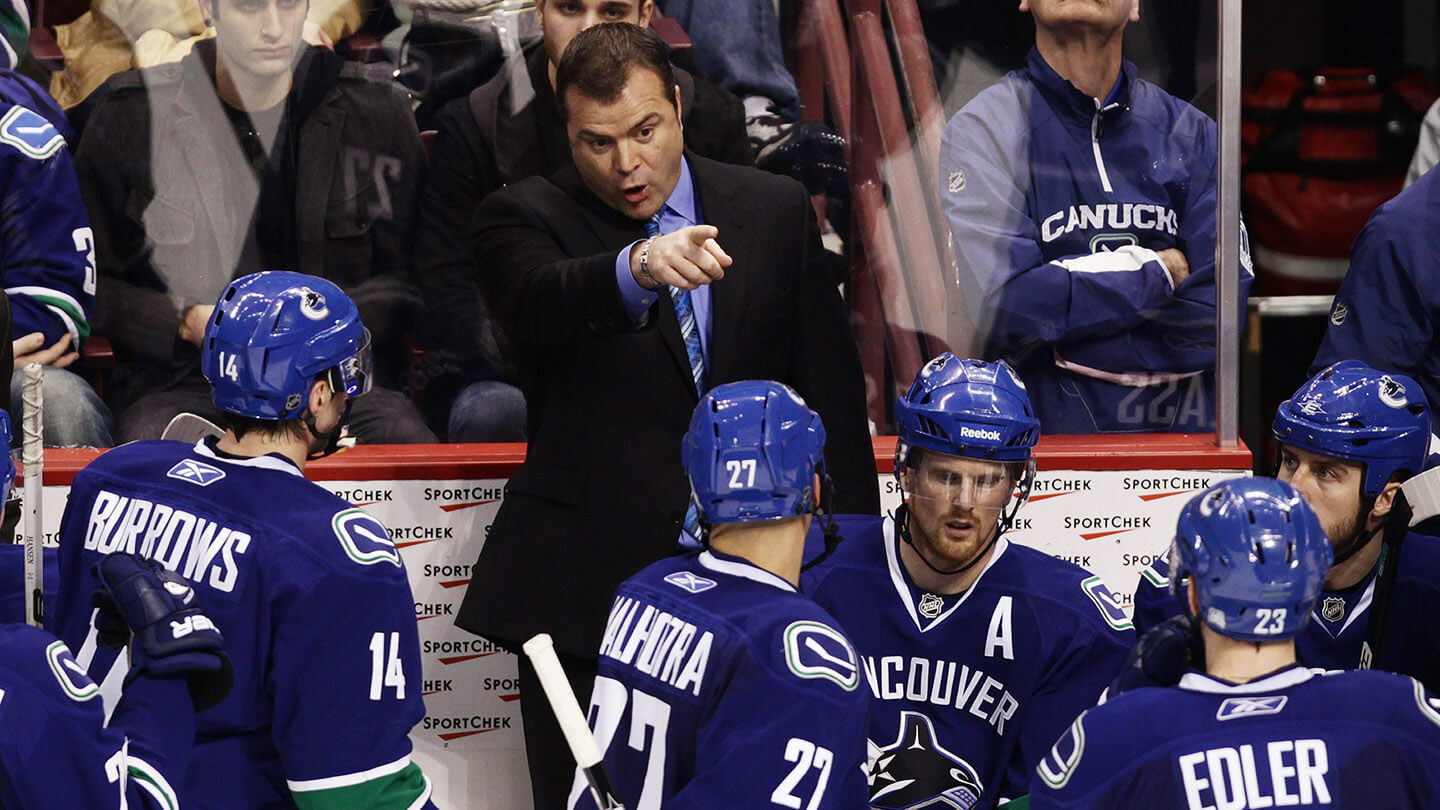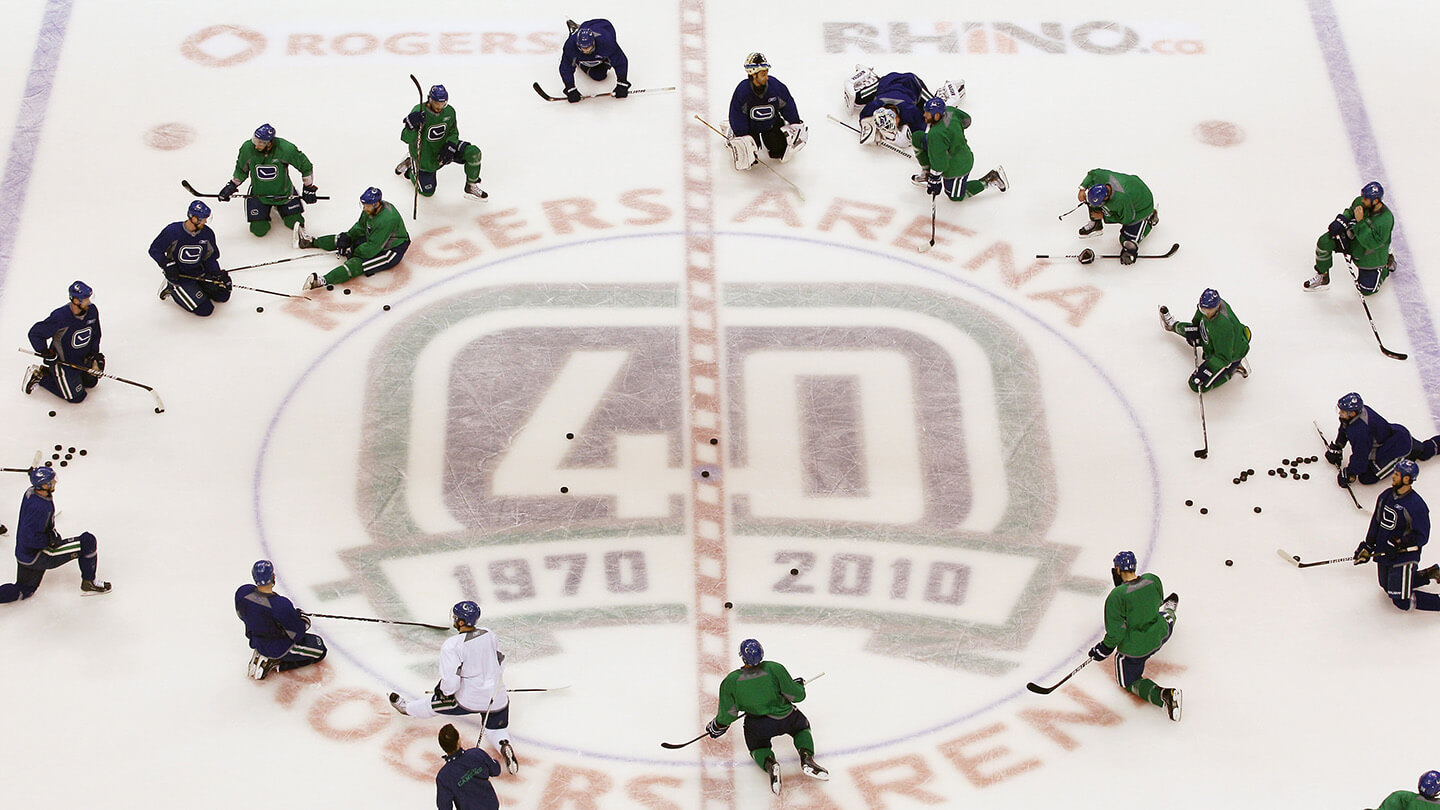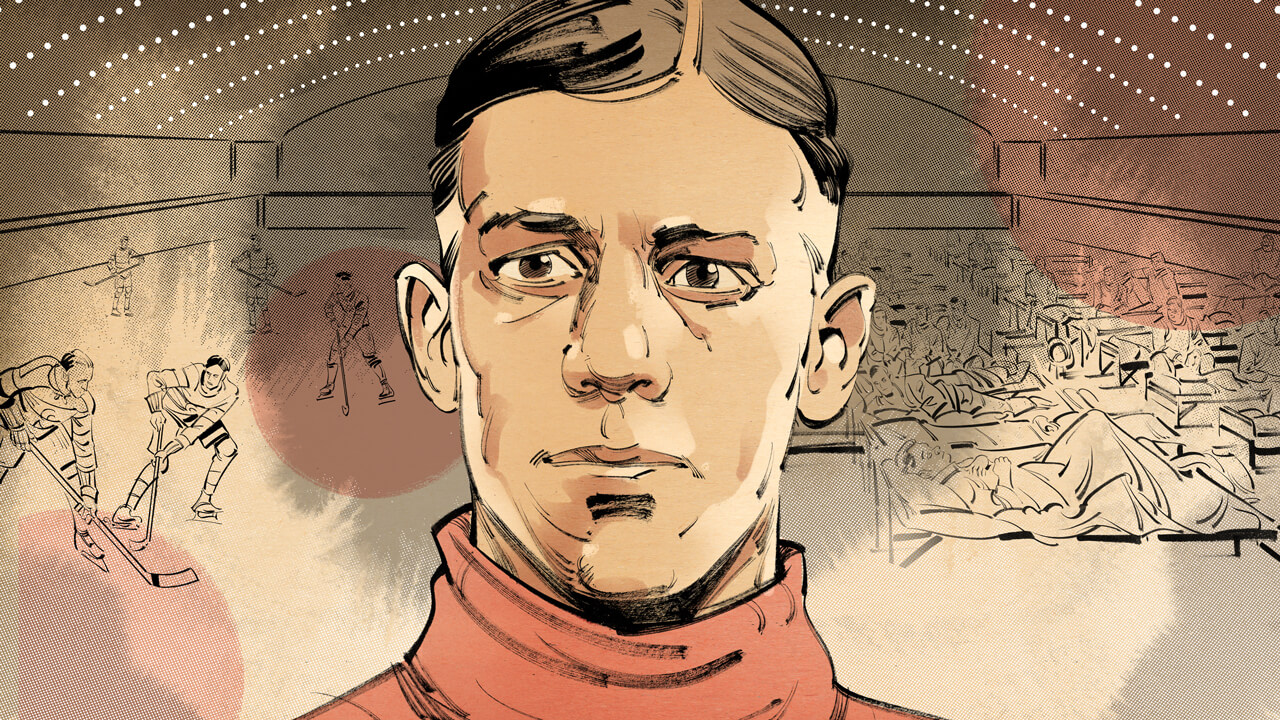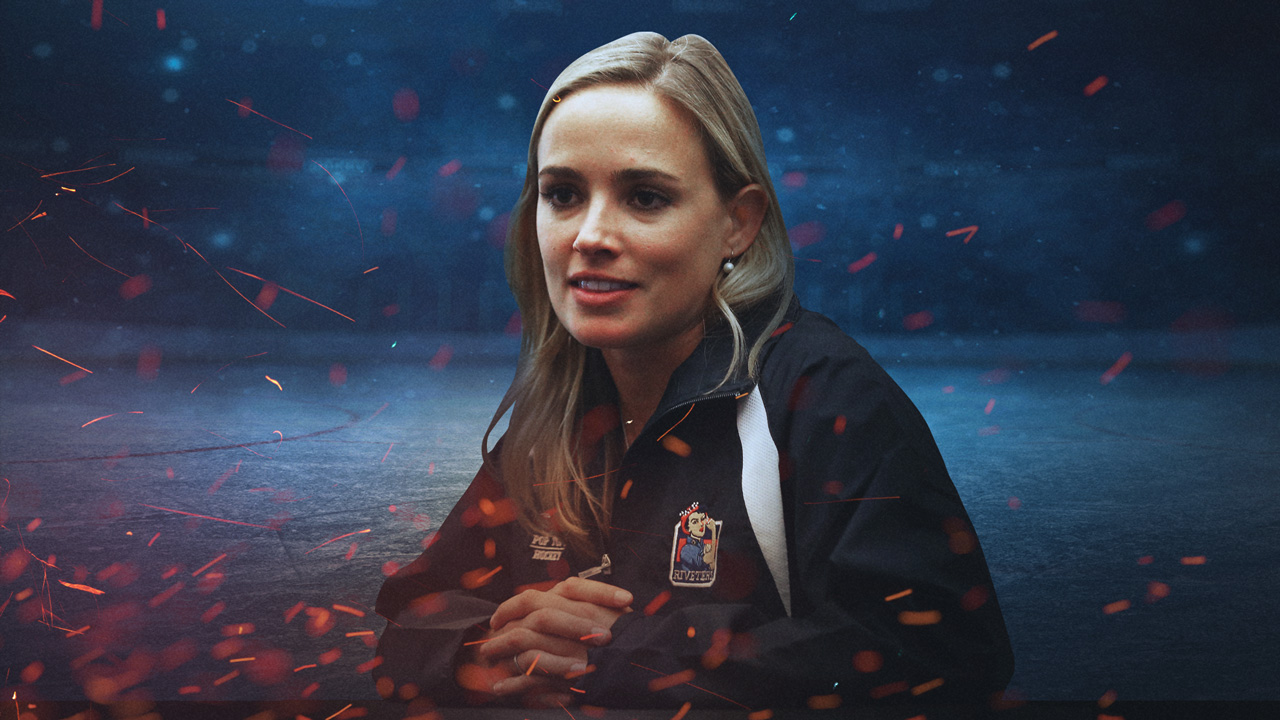RICK BOWNESS (Assistant coach, 2006–2013) I do remember almost breaking up a practice fight with Kevin and Kesler. They were fooling around the ice and then it got a little too serious. Someone yelled, ‘Bones, you can’t leave the ice, they’re going to have a fight!’ I looked back and sure enough, they were just about ready to go at it. By the time we got them in the locker room, it was forgotten. That’s how competitive they were.
KELLY We were on the bench once before practice. Trevor Linden was there. I can’t remember exactly how it all happened, but right around then, 8 Mile was a big movie. Kesler was saying something, and Bieksa replied, “Okay, 4 Mile.” I thought Trevor and I were going to fall off the bench.
BURROWS I remember Kevin cutting the sleeves off one of my favourite sweaters. After practice I got dressed and the sleeves were cut off. Obviously he’s saying it’s not him, and then Kesler is saying it’s not him, and you don’t really know who did it. I think that’s the angriest I got. We went to Columbus and in one of these restaurants, there was a vending machine where you could scoop up a lobster and bring it back home and cook it yourself. We took it back and threw it in Ryan’s bed. He wasn’t too happy having a lobster in his bed.
We interrupt all of this craziness to remind you these three could really play. Kesler, taken 23rd overall in the 2003 NHL Draft, won the Selke Trophy in 2011. He is seventh all-time among Canucks in shorthanded goals, 10th in game-winners.
KELLY You could tell he was going to be an NHL guy. There was no doubt. It was just a matter of time.
SMYL I remember him early on [with the Moose], his first leg was always over the boards. Like, “I want this, I want this.” And it’s kind of, “Take your time. You’re going to get your time.”
CRAWFORD I remember him struggling with offence that first year he spent in the American League. But he played a very mature game for a young player, defensively. My brother [Marc], who was coaching in Vancouver at the time, liked and respected how he played. We were a little concerned that offence was going to be problematic for him if he didn’t follow the proper steps. But he proved us wrong. Peter Sarno was our highest-scoring player [in 2004-05], and he was kind of our half-wall guy on the power play, but Kesler was a very dominant two-way power forward. And he scored 30 that year.
NEWELL BROWN (Assistant coach, 2010–2013, 2017–present) Kesler in front of the net on the power play was fantastic. A lot of guys don’t want to do that job, because they want to play on the half-wall, which is more of a prestigious role. But Kes just really bought into that. He ended up scoring 41 goals and 15 power-play goals [in 2010–11].
HIGGINS I played on a line with Kesler pretty much my entire time in Vancouver. We felt we matched up well against the other team’s best players. We would talk before the game and say, “We’re going to win this matchup.” And we would tell the rest of the team, “We’re winning this matchup, so if you guys win your matchups, we’ll win the game.”
JEFF TAMBELLINI (LW, 2010–2011) He played at Ohio State. I played at Michigan. So, coming up, the first time I met him, it was in such a heated NCAA rivalry that of course we didn’t like each other. Once I got into the room with him, I had more respect for the way this guy played. He played it so hard.




